Here we are, once again, at the top of my annual list of board games. There’s a lot of familiar faces from previous years in here – not a surprise, great board games rarely stop being great) but this section includes not only two variants of great game franchises, but also two bits of new blood, including one that will seem…. let’s just say insanely high.
It’s always personally rewarding to me to build this list – as a game designer, one of the things that I really enjoy doing and finding valuable is dissecting a game to figure out WHY I think it’s great. But at the same time, it’s also a huge sigh of relief to actually get this done every year. I try to do this before Christmas every year just in case it inspires someone to get a last-minute stocking stuffer, but that of course means that I’m piling more on myself in the craziest part of the year.
So I ask you to do one thing for me, dear reader, which is to give feedback. Tell me, either here or on Twitter and Bluesky, what you think. It may not seem like much, but creators crave knowing that big projects like this are reaching an audience. So tell me: what did I get wrong? What did I get right? What’s missing? And perhaps what I find most interesting, what did I convince you that you need to give a shot?
Anyway, happy holidays, and enjoy the top 10!
Previously: 100-91 90-81 80-71 70-61 60-51 50-41 40-31 30-21 20-11
10. Heat: Pedal to the Metal
“Manage your race car’s speed to keep from overheating.”
Released: 2022
Designer: Asger Harding Granerud, Daniel Skjold Pedersen
Players: 1-6
Estimated Time: 30-60
New to List

I’m not usually a big fan of racing games, but I was intrigued when Heat started getting hyped at the end of last year. And I managed to sit down and play a couple games, and the hype is real.
The problem with most racing games is that it’s hard to thread the needle and make a gamer’s game. If you manage to add in too much complexity, it bogs the game down and doesn’t feel like a true race. If you simplify it too much, even your best game can feel a little … kiddie-oriented. (I’m looking at you, Camel Up). Heat does thread that needle.
Heat is, at it’s core, a deckbuilding game, where most of the cards represent your car’s speed. The gear you are in determines how many of those cards you can play. But you can also try to do a handful of ludicrous things (such as change two gears at once), and if you do, then ‘heat’ cards get added to your deck. These ‘heat’ cards basically just junk up your deck, and acquiring a ton of ‘heat’ cards can leave you with a hand of junk that effectively requires you to take a turn off to get things under control.
This whole system hits its apex when you try to round curves. Players want to round curves at an optimal speed, but if they go too fast, they’ll spin out and be set back. And there are random elements to the game, where you can’t always be sure what speed you’ll be hitting a curve at.
The end result is a game design that is simple and elegant, but also provides a puzzle that more established gamers will really sink their teeth into. And on top of that is a beautiful production, with lots of expansion potential in the form of new tracks. Heat is good, and deserves the praise it’s getting.
9. Lost Ruins of Arnak
“Explore an island to find resources and discover the lost ruins of Arnak.”
Released: 2020
Designer: Elwen, Min
Players: 1-4
Estimated Time: 30-120 mins
Last Year: 7

In 2020, two games took bold swings at an innovative new genre which merges worker placement with deckbuilding. Most people prefer Dune Imperium, a game that has already been covered. But that game is a knife fight. I prefer the sprawling, more loose Indiana Jones-esque experience that is Ruins of Arnak.
Each player plays as an Indiana Jones-esque hero, attempting to explore the wilds of some overgrown jungle in order to find the fabled Temple of Arnak. Along the way, you’ll need to acquire resources, explore discovery sites, acquire sidekicks that provide you powers, and then plunge into the depths of the temple itself.
My favorite part of the game is how new worker placement locations are added to the board – a game mechanic I always love when it appears (Lords of Waterdeep is another game that does this well). When players explore locations, they unlock new locations that can be used by other players on other turns. They also get first crack at those rewards as well as bonuses – and a monster they need to fight.
The resulting package is big, gaudy, sprawling, thematic and a lot of fun, and yet still playable in a reasonable amount of time. A big thumbs up on this one.
8. Beyond the Sun
“Collectively develop a tech tree to fuel new discoveries and colonize space.”
Released: 2020
Designer: Dennis K. Chan
Players: 2-4
Estimated Time: 60-120
Last Year: 5

Let’s cut to the chase. This is Skill Trees: The Game. If that description appeals to you at all, you should go to Amazon and drop this in your cart right now.
The central focus of Beyond the Sun is the main board, which has a massive skill tree. Players start with a small handful of basic technologies, but can eventually acquire the knowledge and resources to expand further into the skill tree. Everyone on the table has the same options, but the decisions you make can make your civilization radically different from your opponents.
Unlocking skillboxes in the skill tree offer a number of benefits, but the most interesting is that the skill tree actually has worker placement locations on it, which unlock as you get deeper into the experience. These worker placement options are exclusive (only one person can claim them at a time) but given that everyone’s skill tree development can be radically different, it’s likely and possible that you have worker placement options unavailable to anyone at the table.

The game also has a smaller sideboard, which has an incredibly simplified galactic map where players can fight over and colonize planets. Claiming these planets is really the goal of the game, and the skill tree nodes not devoted to straight-up production efficiency are really focused on building bigger, stronger ships to help you colonize these planets.
The game would probably be ranked even higher in the list if it were better looking. It’s not a surprise that this game has a dry, sparse presentation, especially with a huge honkin’ skill tree being the centerpiece of the game, but it still seems like things could look a lot better, especially elements like the playerboard. Still, the people who like fiddling with skill trees aren’t going to care. If you’re the sort of nerd that at one point spent too much time on Elitist Jerks making WoW builds, this game is going to simply strike a chord with you.
7. Pandemic Legacy: Season 1
“Mutating diseases are spreading around the world – can your team save humanity?”
Released: 2015
Designer: Rob Daviau, Matt Leacock
Players: 2-4
Estimated Time: 60 mins
Last Year: 8

Pandemic is a fine, classic board game – really the progenitor of all modern cooperative gaming – but frankly it’s showing its age. But in 2015, the brains behind Pandemic completely reinvented it to create what is probably the finest Legacy game ever made.
A ‘legacy’ game is one with an ongoing story thread, but also it’s a game where new game elements and components are added and removed over time. You will rip cards in half, add new game components to the board to represent unlocked game rules, and even add stickers to the board – for example, to show that your group let a city collapse too far into chaos, becoming a festering pile of ruin reminding you of your failure with every future game you play.
So how does this all come together? Each player has a different character with a different special power, and they attempt to work together to cross the globe and stop a global pandemic. Pandemic Legacy adds chapter-by-chapter narrative to the experience, where each month of a year represents a different scenario, with different rules and storybeast. As players progress through the year, new content is unlocked, new challenges are encountered, and new game pieces and mechanics are added to the game. The whole thing elevates masterfully, and tells a compelling story full of twists and turns that will drive you nuts.
I’ve generally stayed away from legacy games (well, multiplayer ones anyway) as my gaming time is pretty limited nowadays, and I’d rather play a wide reach of board games than focus on one for a few weeks in a row. But Pandemic Legacy is an exception. If you have a steady board game group that likes coop and can stick through the whole campaign (which will take between 12-20 games of 45-60 minutes each, depending on how well you do), Pandemic Legacy is one of the best board game experiences you can possibly buy.
6. Yokohama
“Claim your fame as the dominant merchant in the Meiji period of Yokohama.”
Released: 2016
Designer: Hisashi Hayashi
Players: 2-4
Estimated Time: 90 mins
Last Year: 6

In Yokohama, players play as the CEO of a company with a handful of apprentices. On your turn, you’ll place up to three apprentices, and then walk your CEO from one location to another. You can go anywhere you want, as long as there is an unbroken string of apprentices between your current location and your final location.
If this sounds like midweight classic Istanbul to you, then yes, that’s a good eye. However, the gaming community more frequently refers to it as “Istanbul on crack”. The primary reason is that, when players get to a location, the action they take is equal to the number of meeples on the space. Thus, if you have your CEO and three meeples at the fishing dock, you would take 4 fish (and then pick up the meeples for use in a later turn). Also, you have the ability to build shops and offices, which act as ‘permanent’ meeples on locations you want to go to frequently.

Yokohama has an intimidating board presence. Setup involves building a randomized pyramid of locations based on player size, and at first glance, this game looks like a wall of byzantine decisions. But underneath all of this, the game is actually simple, the core puzzle of placing workers optimally is fiendishly delicious to take on, and the whole package wraps into a bundle of heavy eurogaming goodness at its finest.
5. Whistle Mountain
“Construct machines and collect resources from your new airships.”
Released: 2020
Designer: Scott Caputo, Luke Laurie
Players: 2-4
Estimated Time: 60-90 mins
Last Year: 3

I like worker placement games. If you’ve read this far, you probably like worker placement games, too. But what if they were crazier? Worker placement games where your options are constantly changing, with powerful new options constantly coming available and others disappearing from the board? Well, allow me to present ‘worker placement, only completely insane’.
In Whistle Mountain, each player is working together to help build a town/structure in a canyon as the bottom of the canyon begins the flood. Each player has three ‘workers’ represented by three balloons, which vary from 1×1 (hot air balloon) to 1×3 (zeppelin). On your turn, you can place your worker on the board, and it will get all the resources that it’s adjacent to, either on the scaffolding or rooms that are next to it (see image above for an example of both).
But here’s the thing. You are also building the scaffolding ang the rooms, which means that the players, each working towards their own ends, are continually adding new worker placement locations – locations that eventually other players can take advantage of as well.

But that’s not all! As your group’s pile of scaffolding reaches ever higher towards the sun, the bottom of the canyon begins to flood, which is done by placing water strips over those rooms and scaffolding (see image above). This effectively destroys those worker placement levels. It’s very common to have games where a resource is ridiculously abundant in early levels, only to become nearly completely unavailable once the lower levels flood.
The end result is a worker placement game that feels like surfing chaos. Is it for everyone? No. While the game isn’t particularly heavy, it does require a certain ability to deal with this kind of madness and adjust smoothly to emerging circumstances, but people who love swimming in madness are going to find this a delight.
4. Clank! Catacombs
“Deck-building adventure meets tile-laying in the newest incarnation of Clank!”
Released: 2022
Designer: Paul Dennen
Players: 2-4
Estimated Time: 45-90
New To List (Clank Legacy was #2)

You’re just not going to go wrong buying a game that has ‘Clank!’ in the title. The original Clank was my top game for a long time. Last year, Clank: Legacy was a coin flip away from the top spot, and it’s probably my favorite Legacy game of all time. But I didn’t want to put two Clanks on the list, and I think it’s worth noting that Clank: Catacombs deserves a space in the conversation.
The core of Clank has always remained the same. Players are adventurers trying to sneak into a dungeon, get as much loot as they can and (this part is important) get out.
Clank is also a deckbuilding game. Each turn, a player will play their hand of five cards. Each card will – among other effects – give the player movement and combat capability, as well as give them purchasing power they can use to buy better cards. The most powerful cards generate noise – called ‘clank’. This clank gets thrown in a bag, and when the inevitable dragon attack happens, these cubes are pulled from a bag. You can only have ten of these cubes pulled before you die.
Clank! is a great core ruleset because it manages to successfully merge deckbuilding with press your luck gameplay, and nearly every game is exciting because even if someone is well behind on points, there is great entertainment value in seeing if they manage to escape the dungeon at all.
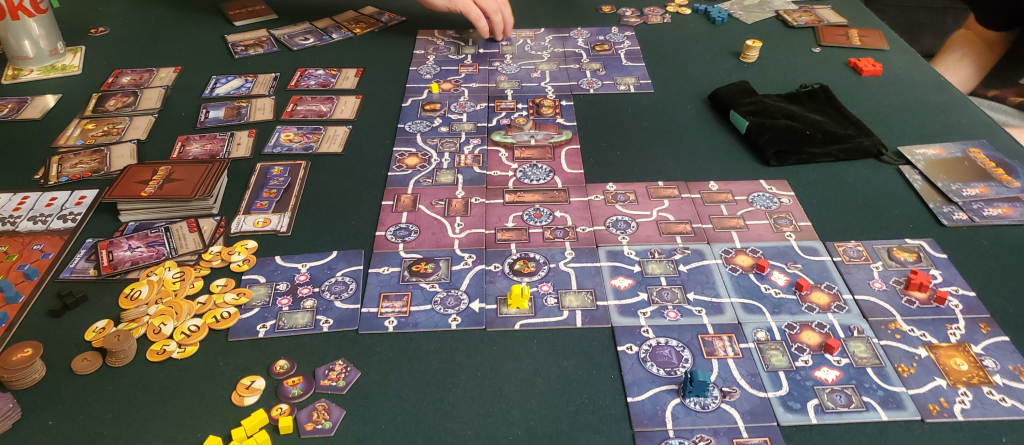
What Clank: Catacombs adds to this formula is randomness. Instead of having a static board which, frankly, can start to get optimized with a few plays, the dungeon in catacombs is explored and revealed as players move through tiles. Not only this, tiles can constantly be moved or rotated by various effects. The end result is a Clank, but it’s a Clank where players have to constantly react to an evolving board state – and that’s a significantly fresh take on core formula.
It’s almost certain some version of Clank! will appear on my list for years to come. Which one will it be next year? I don’t know for sure, but I do have an inkling.
3. Great Western Trail: New Zealand
“Tend to your sheep on the South Island of New Zealand.”
Released: 2023
Designer: Alexander Pfister
Players: 1-4
Estimated Time: 75-150
New to List (Great Western Trail was #1)

Last year, Great Western Trail was my #1 game. It’s slipped a little – largely because while it’s a phenomenal game, it’s a TOUGH teach, with several aspects that are non-intuitive at first. But if you like heavier, meatier board games, GWT is still among the very best you can get. And in the last couple of years, they released two variants: Great Western Trail: Argentina and Great Western Trail: New Zealand. The former I have not played, but I did manage to get my hands on New Zealand and, at least for now, it’s my favorite take on this IP.
The general premise of the game is unchanged – drive a flock of livestock to market, and hopefully have the most diverse hand of livestock possible when you get there. In New Zealand, that livestock is sheep instead of cows, and they add a sheep shearing minigame, which is just the sort of sentence you write when you review board games.
The engine is unchanged – players can travel 3-4 spaces around the board, which basically operates as a large, fancy rondel, and take actions on the spaces they end up on. The actions that you can do allow you to buy new sheep (adding them to your deck), establish new ports to trade with in the waters, shear your sheep for money, and build new buildings, which act as new stops on the rondel.

But all of these spaces have a secondary side, which allows you to ‘sell’ your crappier sheep for some sort of benefit. This is not only important to gain the money or other benefits you might get, but it also allows you to draw to replace the sheep you’ve spent. Because ultimately, your goal is to end up in Wellington with the most diverse hand of sheep you can possibly have, as you can only sell different sheep when you arrive.
The shipping minigame basically acts as a simplified version of the excellent Rails to the North expansion of the base game, included right in the box, which is great. The other change is that this game leans more into the fact that this IP is a deckbuilder. As such, there’s a new classification of cards players can add to their deck, which operate like cantrips in Magic: the Gathering – you use them, and then immediately draw to replace them, which allows the designers to add more and more interesting gameplay effects to the deck without slowing down the crucial herd assembling game that is central to the core game.
Great Western Trail: New Zealand is a great addition to the ecosphere, and this entire IP is going to be my go-to heavy euro for quite some time. I still have yet to get my hands on Great Western Trail: Argentina, but I suspect we’ll prefer New Zealand, solely because of my wife’s passion for knitting and as a result having something sheep-centric is always going to be the tie-breaker in this household.
2. Cthulhu: Death May Die
“Disrupt the ritual and slay the Elder Gods in this co-op dice chucker. “
Released: 2019
Designer: Rob Daviau, Eric Lang
Players: 1-5
Estimated Time: 90-120
New to List

Normally, I’m not a big fan of tactical dudes-on-a-map board games. If I wanted to play D&D, I’d play D&D, and if I wanted great tactical combat, I’d play a computer game, because frankly computers do math much faster than I do. So I’m as shocked as anyone else that two of these games made appearances on the list. I mean, Zombicide Undead or Alive at #70 is one thing, but Cthulhu: Death May Die making a new appearance at #2 is frankly pretty shocking. And yet, this is no fluke – my group probably played more of this than any other game on the list. Because it’s GOOD.
A huge part of why both these games are on the list is probably that they are NOT finely tuned tactical puzzles, but are more akin to beer-and-pretzels dice tossers. Monsters will be spawning in hordes around you, and you’ll be killing them in hordes as well. In an unusual move for a Cthulhu game, your characters feel almost superpowered right from the start, and you’re going to go straight into the teeth of the bad guys. And go crazy doing it.

In most Cthulhu-themed games, insanity is a resource, and this game is no exception. But they add an interesting twist – insanity also makes you more powerful. As you get more insane (see the bar on top of this player sheet here), you’ll unlock new, powerful abilities and may even unlock new dice you can use on every roll. Which means that sometimes – in fact, very FREQUENTLY, getting more insane fast is the best thing you can do, but again you’re playing with fire. Lose all of your sanity, and you’re out. Effectively, this makes the very basics of character development a press-your-luck game – and it’s wonderful.
The game is scenario-based but it’s also mix-and-match. For each game, you’ll match one episode box with one bad guy. The episode details the dungeon layout and outlines the steps necessary to summon the big bad, whereas the bad guy you choose helps determine the side enemies you’ll face as well as well as delivers the contours for the final battle, and mixing and matching these is more than sufficient to create an appreciable sense of gameplay variety. The core box contains 2 big bads (Cthulhu and Hastur) and 6 episodes as well as 10 investigators (with wildly varying powers) and a host of trash bad guys to kill. More content was released as part of the initial kickstarter, but if you’re really craving more, keep an eye on the upcoming Fear of the Unknown standalone expansion.

On top of all the above, the game has some of the best Cthulhu-themed miniatures I’ve ever seen, and playing with a painted set is an absolute joy (even if my painting skills are involved). Death May Die is just a great game that checks all the boxes, if you like great, dicechucking-weight tactical gameplay.
1. Champions of Midgard
“Gain glory by defending a Viking harbor town against trolls, draugr and other beasts.”
Released: 2015
Designer: Ole Steiness
Players: 2-4
Estimated Time: 60-90 mins
Last Year: 4

Champions of Midgard is a wonderful game, a delicate balance of thoughtful worker placement Eurogaming with Ameritrash dice slinging, all wrapped in a wonderfully Norse package of goodness.
In Champions of Midgard, each player plays a Viking Tribe trying to aspire to Greatness as measured in Victory Points. Doing so will require the players to acquire Viking warriors – represented by dice, find monsters and kill them. By and large, acquiring dice is the core part of the economic half of the game, but the battles are the good part. You’ll cross across the ocean (possibly being waylaid by Krakens or other bad guys, which can pull warriors off the boats) and then the survivors will fight these bad guys with a roll of those dice. And there’s always a chance that you get a bad roll, and your Viking horde is wiped out in a blaze of ignobility.
Some players don’t like the randomness of the dice, though, and while I don’t agree, the Valhalla expansion solves this nicely. Not only does it add three new kinds of warriors (represented by new, differently colored dice), it also rewards with valhalla chits, which can be traded for benefits. Sometimes, what you can get is so nice that the right move is to send your Viking clan straight into the meat grinder.
At the end of the day, Champions of Midgard is a perfect combination. It’s an easy teach, it’s got thoughtful economic development, Ameritrash combat, a great thematic board presence and just enough interaction between players to keep things spicy. And for all these reasons, it’s most Top Board Game Of All Time, At Least In 2023.

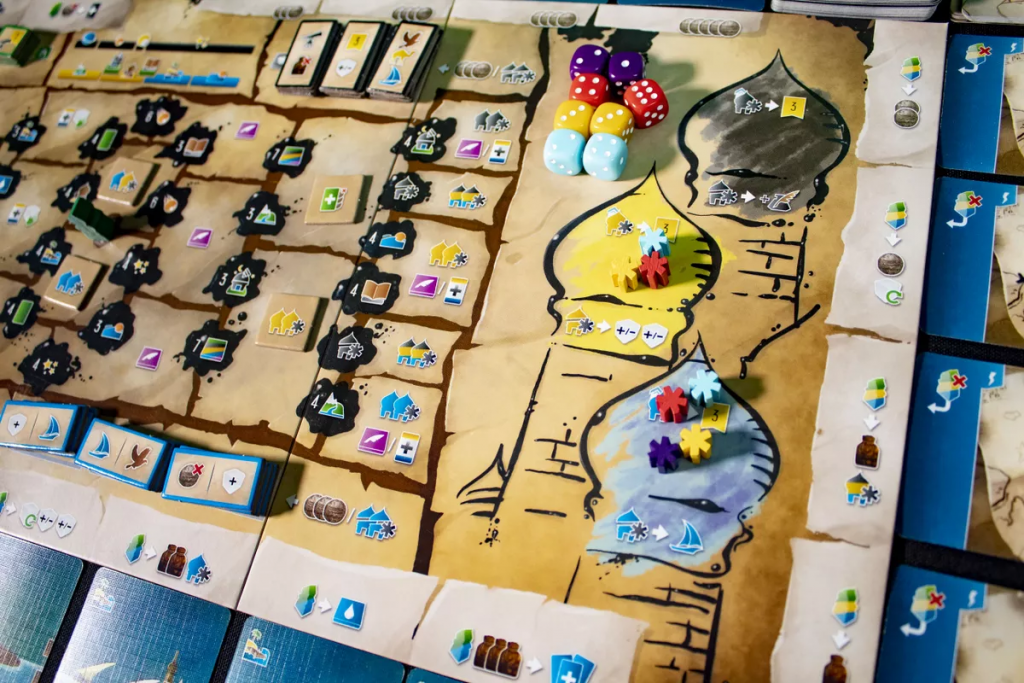


















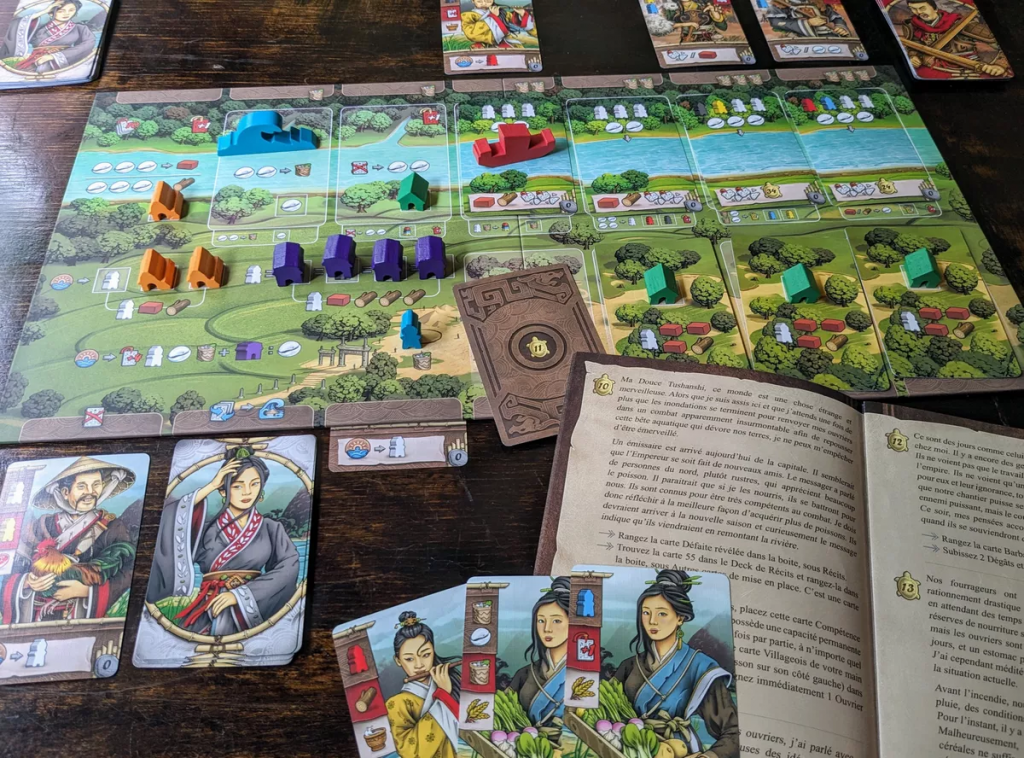










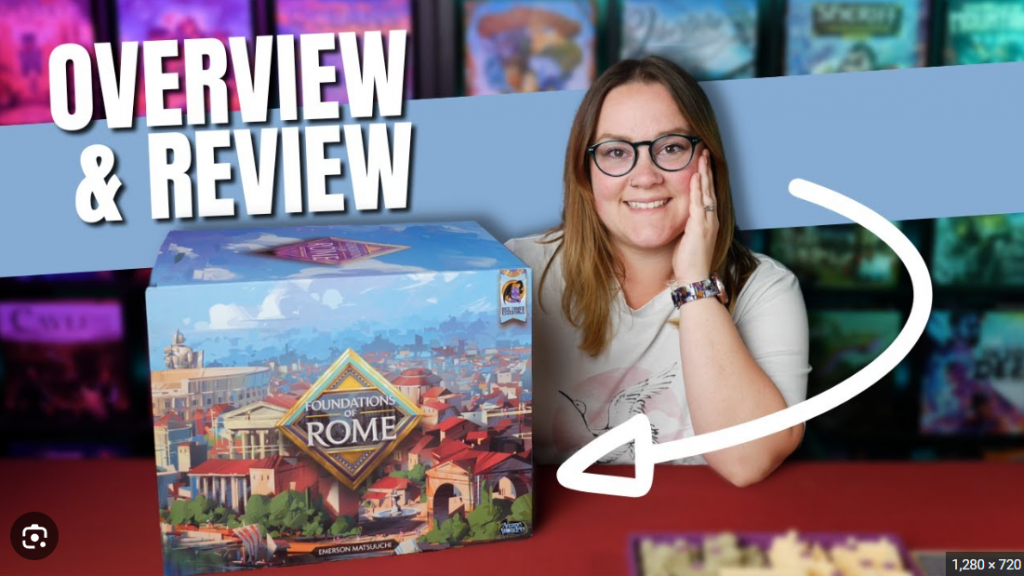

































































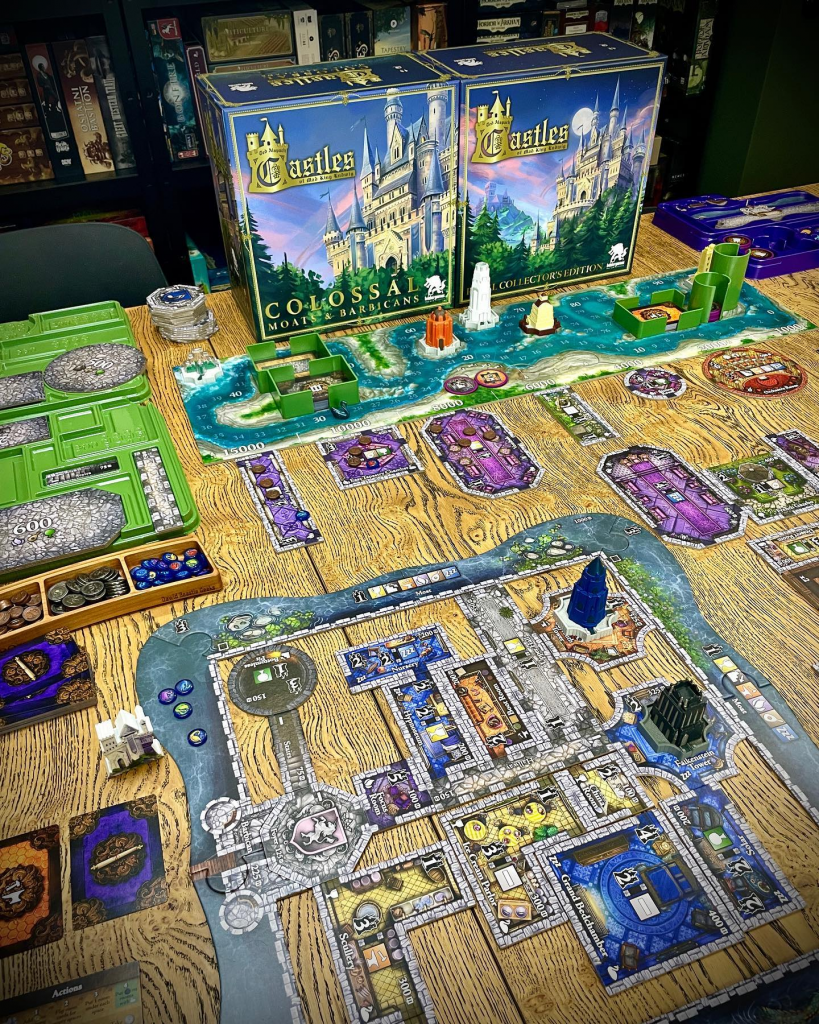










Recent Comments